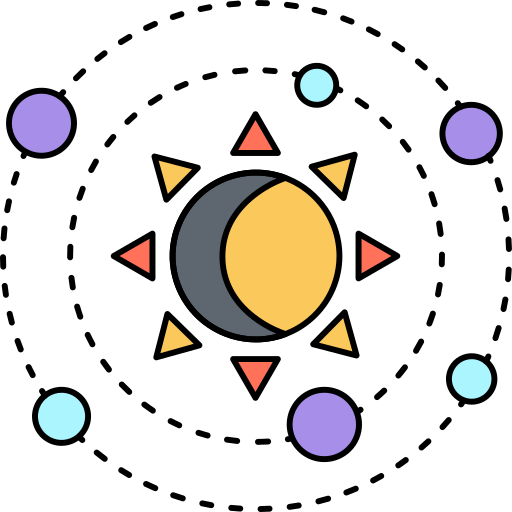Vedic Astrology, also known as Jyotish, is an ancient and intricate system that not only provides insights into an individual's personality, but also identifies specific celestial imbalances that can influence one's life path. These imbalances, known as "Doshas," can affect various aspects of an individual's life, including relationships, health, and career. In this blog post, we will explore some of the most well-known Doshas in Vedic Astrology, such as Mangal Dosha and Kaal Sarp Dosha, and shed light on their meanings and implications.
Understanding Doshas in Vedic Astrology
In Vedic Astrology, a Dosha is a flaw or imbalance in the birth chart, caused by the unfavorable positioning of certain planets. These imbalances are believed to influence an individual's life in a negative way, bringing challenges, obstacles, and difficulties in various areas. Doshas are considered inauspicious and are often a cause for concern, particularly when it comes to marriage and health.
Let's delve into some of the most prominent Doshas in Vedic Astrology:
1. Mangal Dosha (Mars Dosha)
Mangal Dosha, also known as Kuja Dosha or Angarakha Dosha, is one of the most feared Doshas in Vedic Astrology. It occurs when Mars (Mangal) is placed in certain houses of the birth chart, such as the 1st, 4th, 7th, 8th, or 12th. The presence of Mangal Dosha is believed to bring discord and challenges in one's marital life.
Implications of Mangal Dosha:
- Delay or obstacles in finding a suitable life partner.
- Marital conflicts and disputes, including the possibility of separation or divorce.
- Health issues related to Mars, such as accidents or injuries.
Remedies for Mangal Dosha:
- Marrying a person with a similar Mangal Dosha (Manglik) is considered a remedy.
- Performing specific astrological rituals and wearing gemstones like coral (associated with Mars).
2. Kaal Sarp Dosha
Kaal Sarp Dosha occurs when all planets in a birth chart are placed between the positions of Rahu (the North Node of the Moon) and Ketu (the South Node of the Moon). This alignment is believed to create a powerful and challenging Dosha that affects various aspects of an individual's life.
Implications of Kaal Sarp Dosha:
- Struggles and obstacles in life, including career, finances, and relationships.
- Frequent changes and instability.
- A sense of being trapped in life's challenges.
Remedies for Kaal Sarp Dosha:
- Remedies include performing specific Vedic rituals, including Rahu and Ketu mantras.
- Praying to Lord Shiva and visiting Shiva temples.
- Fasting on particular days associated with Kaal Sarp Dosha.
3. Shani Dosha (Saturn Dosha)
Shani Dosha, also known as Saturn Dosha, occurs when Saturn (Shani) is placed in challenging positions in the birth chart. Saturn is considered a malefic planet in Vedic Astrology and can bring challenges, particularly when associated with certain houses.
Implications of Shani Dosha:
- Delays and obstacles in one's life, including career and personal growth.
- Financial challenges and setbacks.
- Periods of intense hardship and karmic lessons.
Remedies for Shani Dosha:
- Worship of Lord Shani and recitation of Shani mantras.
- Wearing blue sapphire (associated with Saturn) as a protective gemstone.
- Performing charitable acts and acts of service.
4. Rahu-Ketu Dosha
Rahu and Ketu, the lunar nodes, are considered shadow planets in Vedic Astrology. Rahu-Ketu Dosha occurs when Rahu and Ketu are afflicted or placed in specific houses of the birth chart. This Dosha can bring challenges related to obsessions, illusion, and karmic imbalances.
Implications of Rahu-Ketu Dosha:
- Psychic and mental challenges, including phobias and irrational fears.
- Issues related to addictions, obsessions, and deceit.
- A strong karmic influence that may lead to unpredictable life events.
Remedies for Rahu-Ketu Dosha:
- Worship of Lord Ganesha and recitation of Rahu-Ketu mantras.
- Wearing gemstones like hessonite (associated with Rahu) and cat's eye (associated with Ketu).
- Practicing meditation and mindfulness to overcome obsessions and illusions.
5. Pitra Dosha (Ancestral Dosha)
Pitra Dosha, also known as the Ancestral Dosha, is believed to occur when an individual's ancestors have unresolved issues or unpaid karmic debts. These ancestral imbalances can be passed down to the individual through their birth chart.
Implications of Pitra Dosha:
- Problems in the family, particularly related to ancestors and ancestral property.
- Financial and health issues linked to the ancestral karma.
- Difficulties in achieving personal goals.
Remedies for Pitra Dosha:
- Performing ancestral rituals and ceremonies, including Tarpan (offering water to ancestors).
- Seek guidance from a knowledgeable astrologer and priest.
- Acts of charity and service in honor of one's ancestors.
Conclusion: The Cosmic Blueprint of Challenges and Remedies
Doshas in Vedic Astrology reveal the imbalances and challenges present in an individual's life, but they are not meant to be viewed with fear. Instead, they serve as a cosmic blueprint that points to areas where one can focus on personal growth, self-awareness, and spiritual development. The remedies associated with each Dosha are aimed at mitigating the challenges and helping individuals align with their life's purpose.
It's important to remember that Vedic Astrology provides a holistic perspective on one's life, and Doshas are just one aspect of this intricate system. By understanding and addressing these imbalances, individuals can navigate life's challenges with
